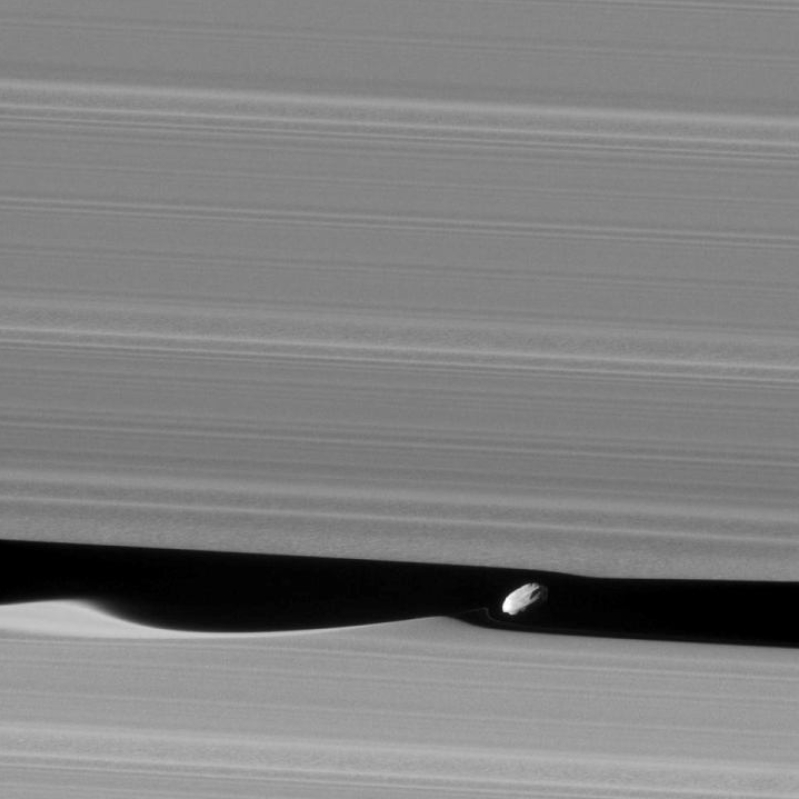
The closest view yet of Saturn's moon, Daphnis, being between Saturn's rings was just taken by equipment on NASA's Cassini spacecraft, as the moon maneuvered through one of its ring-grazing passes. NASA photographs are still being collected of Saturn, its rings and moons. This particular moon has become popular due to the ripples it creates on the planet's ring.
Daphnis, also called the "wavemaker" moon, was in a position that allowed scientists to further examine the moon with unprecedented detail. This photograph is monumental for NASA because it is the most detailed photograph of the moon yet.
"Like a couple of Saturn's other small ring moons, Atlas and Pan, Daphnis appears to have a narrow ridge around its equator and a fairly smooth mantle of material on its surface -- likely an accumulation of fine particles from the rings," a NASA official said in a press release. "A few craters are obvious at this resolution. An additional ridge can be seen further north that runs parallel to the equatorial band."
The small Saturn satellite is only about 5 miles in diameter, according to a report. The moon makes its orbit within the Keeler Gap inside Saturn's A ring. Daphnis' gravity causes some waves to appear on the edges of the ring, reports Nature World News.
The Cassini program is an international cooperative effort involving NASA, the European Space Agency (ESA) and the Italian space agency, Agenzia Spaziale Italiana (ASI), as well as several separate European academic and industrial contributors. The Cassini partnership represents an undertaking whose scope and cost likely would not be borne by any single nation, according to industry sources. Through the mission, nearly 260 scientists from 17 countries hope to gain a better understanding of Saturn, its rings, its magnetosphere, Titan and its other icy moons.
Cassini completed its initial four-year mission to explore the Saturn System in June 2008 and the first extended mission, called the Cassini Equinox Mission, in September 2010. Now, the spacecraft is seeking to make exciting new discoveries in a second extended mission called the Cassini Solstice Mission.
The mission's extension, which goes through September 2017, is named for the Saturnian summer solstice occurring in May 2017. The northern summer solstice marks the beginning of summer in the northern hemisphere and winter in the southern hemisphere. Because Cassini arrived at Saturn just after the planet's northern winter solstice, the extension will allow for the first study of a complete seasonal period.
Cassini launched in October 1997 with the European Space Agency's Huygens probe. The probe was equipped with six instruments to study Titan, Saturn's largest moon. It landed on Titan's surface on Jan. 14, 2005, and returned spectacular results.
Meanwhile, Cassini's 12 instruments have returned a daily stream of data from Saturn's system since arriving at Saturn in 2004. Among the most important targets of the mission are the moons Titan and Enceladus, as well as some of Saturn's other icy moons.







